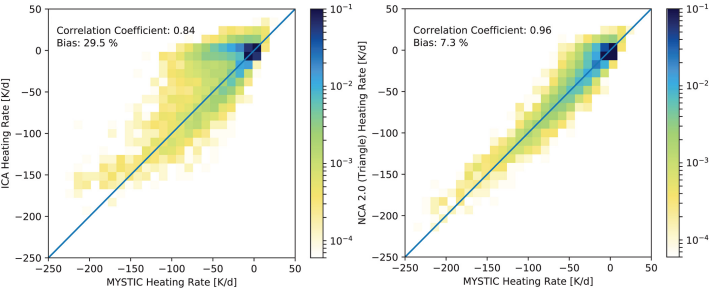Thermal 3D radiative transfer for non-rectangular grids
08.10.2015
Radiation drives weather and climate of our planet. Due to the high computational cost, radiative transfer is treated poorly in most atmospheric models. A common way to treat radiative transfer in atmospheric models is the so called independent column approximation (ICA), a 1D approximation of the radiative transfer solution. However, this method is known to introduce biases. Especially in today's high resolution large eddy simulations models, 3D radiative effects become more and more important.
This work describes a new and fast approach (Neighboring Column Approximation, NCA, based on the work of Klinger and Mayer 2016) which allows calculating 3D heating and cooling rates in the thermal spectral range in large eddy simulation models. With this new version of the NCA it is now possible to calculate 3D heating rates in the thermal spectral range also on non-rectangular grids, as e.g. the triangular grid of the ICON model. In addition the method gained in accuracy and computational speed, compared to the original version.

The figure shows the heating rate results of a cumulus cloud field (modified from Fig. 12 of Klinger and Mayer 2019) of a 1D and the NCA calcualtion compared to our reference results. The reference results were calcualted with our Monte Carlo model MYSTIC. The 1D results compared to the reference results are shown on the left, the NCA results on the right. It is clearly shown that the NCA improves both, correlation and bias.
Klinger, C., & Mayer, B. (2020). Neighboring column approximation—An improved 3d thermal radiative transfer approximation for non‐rectangular grids. Journal of Advances in Modeling Earth Systems, 12. https://doi.org/10.1029/2019MS001843

